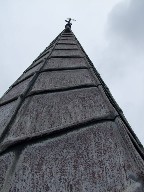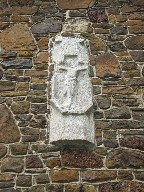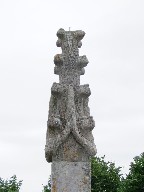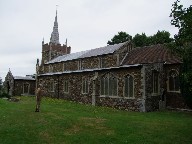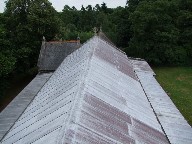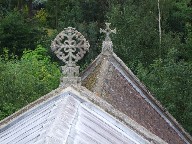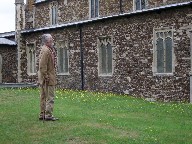| |
|
St
Edmund, Downham Market
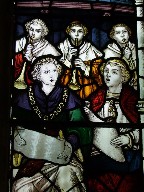 |
|
Downham
Market's town centre is on a smaller scale than
those of nearby Swaffham, Dereham and Fakenham,
and here there is no great church lifting its
head above the market place. To find the parish
church of this interesting town, you need to head
out to the east, where it is hidden from view by
trees on top of a rise above the road to
Swaffham. Here St Edmund sits, a pretty thing in
gingerbread carstone, with an elegant
lead-covered spire crowning its squat tower. You
can see at first glance that this is by no means
a grand, urban church. I was struck by how few
gravestones survive in the churchyard. Carstone
is notoriously difficult to date, but the low
aisles and nave are essentially 15th Century I
think, while the chancel is a 19th century
rebuild. Set into the stone above the priest door
is a crucifixion scene, probably from the top of
a former churchyard cross. It all makes for an
interesting building quite unlike that of most
Norfolk towns. Although there are
exceptions, the parish churches of Norfolk's
market towns tend to be High Church in character,
even Anglo-catholic, and St Edmund is higher than
most. The interior is rather dark thanks to a
multiplicity of stained glass, but it was not
gloomy, and the smell of incense and the view of
the lighter chancel with its big six candlesticks
on the altar was evocative and atmospheric.
Essentially, this is a late 19th century
interior, but there are a couple of important
medieval survivals.
|
The most
significant of these is the set of 15th century glass
panels set in the west window below the ringing chamber.
They include figures from the orders of angels as well as
angel musicians, a fragment of figures rising out of the
mouth of hell from a Harrowing of Hell image, as well as
another fragment of the dead rising from their graves.
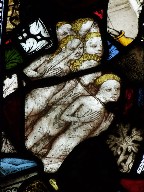 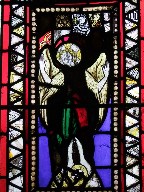 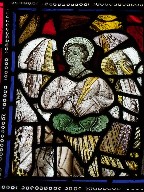
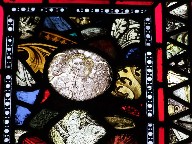 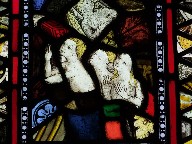 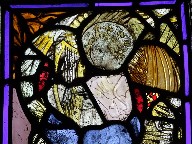
Set in
front of the tower arch is a fine 15th Century font, the
angels on the panels holding shields bearing symbols of
Saints and of the Instruments of Passion. The low west
gallery cuts off the top of the tower arch, but turning
east it creates a sense of the church opening out, and a
walk towards the chancel is from darkness into light. An
enormous glass chandelier fills the nave, while the
aisles spread into mysterious shadows beyond the arcades,
which are quite different from each other, the south
aisle being a curious mixture of arches, the north
uniform.
The east
end of the south aisle opens out beside the chancel to
form a Lady Chapel. Again, the furnishings of chancel and
this chapel reflect the Anglo-catholic enthusiasm over
the decades here, a reminder that, despite the
Evangelical reputation of the Diocese of Ely, there are
some pretty spectacular churches from the other wing of
the Church of England to be found.
| There
is some good late 19th and early 20th century
glass, the best of which is in the south aisle.
One excellent window near to the south doorway
depicts King David accompanying musicians and a
choir on his harp. The inscription tells us that
it was placed here by the father and mother of George
William Haylock, sometime Chorister and Organist
of this Church. He died on November 9th
1918. This was just two days before the
Armistice, and I wondered if his was a tragic
death in those last few hours. But his name is
not mentioned on the Downham Market war memorial. The kind
tower captain insisted that we go up the tower
and have a look at the view, but in high summer
the trees were so full in leaf that it was
difficult to see beyond the rather empty
graveyard. It is possible to spot Ely Cathedral
once the leaves have fallen.
|
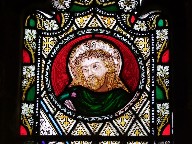 |
|
|
|
|

